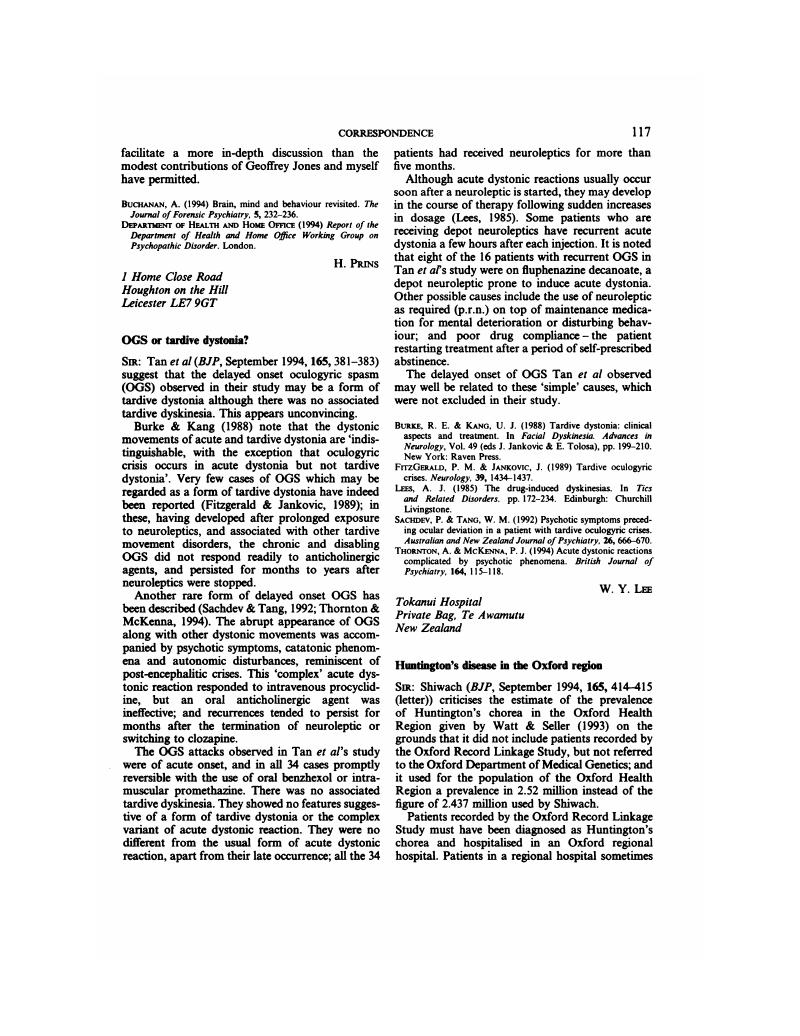No CrossRef data available.
Article contents
OGS or tardive dystonia?
Published online by Cambridge University Press: 02 January 2018
Abstract
An abstract is not available for this content so a preview has been provided. As you have access to this content, a full PDF is available via the ‘Save PDF’ action button.

- Type
- Columns
- Information
- Copyright
- Copyright © 1995 The Royal College of Psychiatrists
References
Burke, R. E. & Kang, U. J. (1988) Tardive dystonia: clinical aspects and treatment. In Facial Dyskinesia. Advances in Neurology, Vol. 49 (eds Jankovic, J. & Tolosa, E.), pp. 199–210. New York: Raven Press.Google Scholar
FitzGerald, P. M. & Jankovic, J. (1989) Tardive oculogyric crises. Neurology, 39, 1434–1437.Google Scholar
Lees, A. J. (1985) The drug-induced dyskinesias. In Tics and Related Disorders, pp. 172–234. Edinburgh: Churchill Livingstone.Google Scholar
Sachdev, P. & Tang, W. M. (1992) Psychotic symptoms preceding ocular deviation in a patient with tardive oculogyric crises. Australian and New Zealand Journal of Psychiatry, 26, 666–670.Google Scholar
Thornton, A. & McKenna, P. J. (1994) Acute dystonic reactions complicated by psychotic phenomena. British Journal of Psychiatry, 164, 115–118.Google Scholar



eLetters
No eLetters have been published for this article.